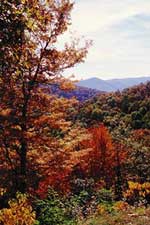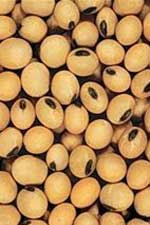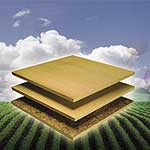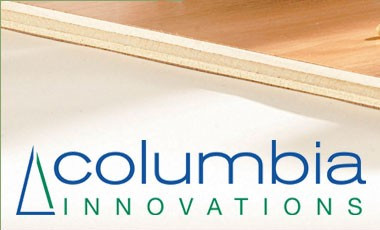- Home
- /
- Resources
- /
- Innovations
- /
- Innovations Story
The Columbia Innovations Story

The Columbia Innovations Story
In early 2001, Columbia Forest Products began looking for alternatives for the urea formaldehyde (UF) adhesives used in the manufacturing of hardwood plywood. Market demands for a no-added-formaldehyde board had begun to appear and Columbia decided that this was a great opportunity to become a market leader for this emerging need.
The company tested several of the available adhesives, but none seemed to quite fit the needs of the company and its customers. Columbia had a goal of completely replacing all UF adhesive systems in their mills and that goal had two key requirements: the adhesive needed to be cost neutral and it needed to be proprietary.
In 2003, Steve Pung, the Vice President of Technology and Innovation at Columbia Forest Products, met Dr. Kaichang Li at a Forest Products Society meeting. Dr. Li, a scientist from Oregon State University, had the idea for utilizing soy protein to manufacture an adhesive for the wood industry. Dr Li made this bio-based discovery while at the seashore collecting mussels; he was amazed at the enormous holding power of the mussels under the pounding of the ocean waves. He thought about the protein in the mussels and how great an adhesive it would make. Although mussel protein wasn’t readily available, he did know of a high protein resource that was abundant: soy. He found that soy, when combined with a special cross linking agent, closely mimicked the bonds of the mussels.

Dr. Li had completed some basic research and had demonstrated the ability to bond hardwood veneer with this chemistry. He began searching for an industry partnership to investigate the commercialization possibilities, and Columbia Forest Products was interested in being that partner. Dr. Li indicated that Oregon State University had at that time a very strong working relationship with Hercules Chemical in the paper industry. In September 2003, Columbia approached Hercules about jointly developing and commercializing this new technology. Agreements were made and joint CFP/Hercules proprietary funding of this adhesive technology began in January 2004. A new adhesive for the forest products industry was born.
Work began at Columbia Forest Products’ Klamath Falls facility, with the first hardwood plywood mill trials in May 2004 and the first commercial production runs by the end of the year. Columbia funded most of the development work required to make this a commercial product and worked diligently in their mills to ensure that this was a viable alternative to the adhesives currently in the marketplace.
By the end of 2006, all seven of Columbia’s hardwood plywood mills had been converted to this new adhesive system. As the plywood production was ramping up, thoughts also arose about producing particleboard with this new adhesive system. Based on the success with plywood, there was strong reason to think that this technology could be transferred to composite panels.

In August 2005, the first particleboard lab work began and by December of that year, the first particleboard mill trial was run at Columbia Forest Products’ Hearst, Ontario particleboard facility. With continued research and development of the adhesive at the particleboard mill, commercial production of the first PureBond® particleboard began in February 2006.
Over the next year and a half, through research and trials with Hercules, a second generation of the adhesive system was developed, and this first Soyad® adhesive system was used in a commercial application.
In August 2007, Columbia Forest Products decided that there was a great opportunity to share this technology outside its core business. Through discussions with Hercules, Columbia was appointed the exclusive sales and service agent of this advanced adhesive technology for the composite panel industry. To best facilitate this arrangement, and to provide the highest level of information and service, the Columbia Innovations division was created.




